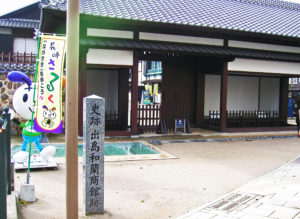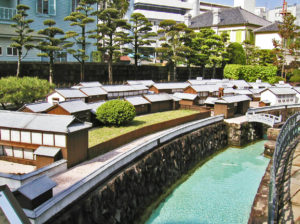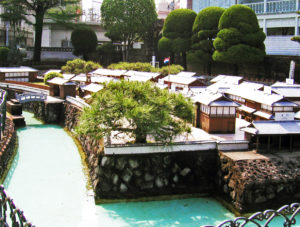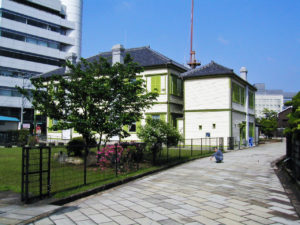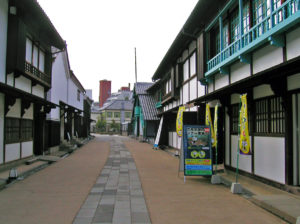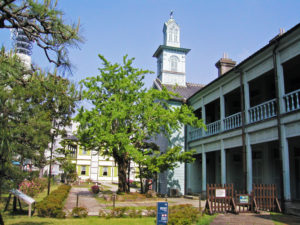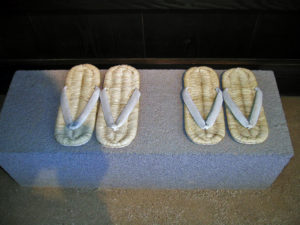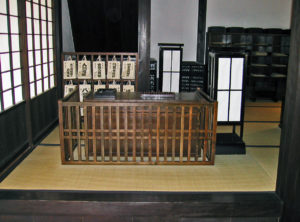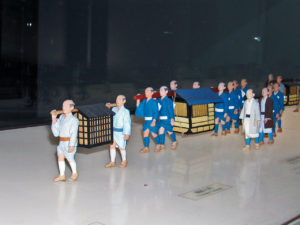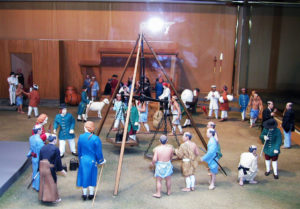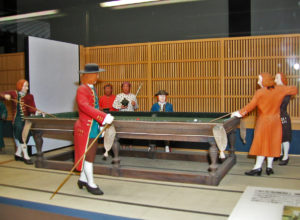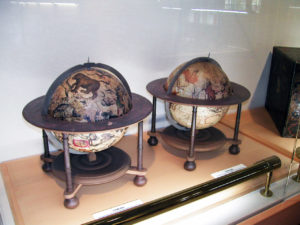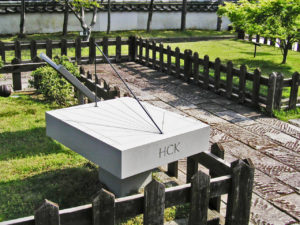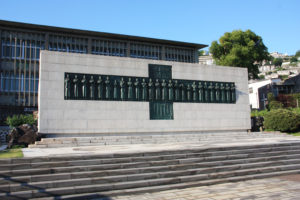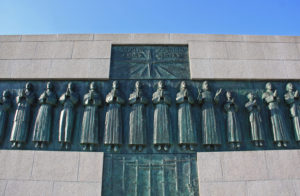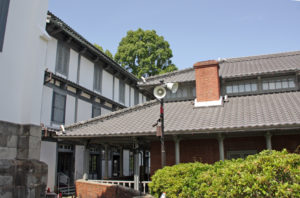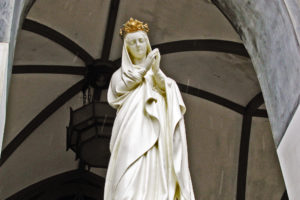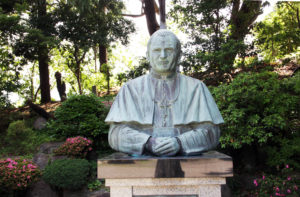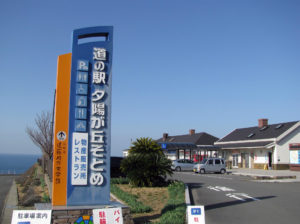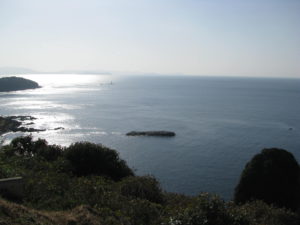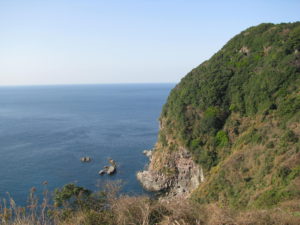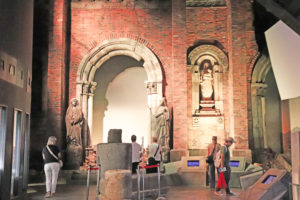Dejima
This Tourist information is provided by Japan KYUSHU Tourist for your journey.
When you have an idea or a plan for traveling in Kyushu, Japan, please contact us
by sending an Enquiry. Make an Enquiry
Dejima was the fan-shaped artificial island in the bay of Nagasaki where was used
as a trading port during Japan’s National isolation of Edo period.
In 1636, the artificial island, Dejima was constructed to accommodate Portuguese
who lived in Nagasaki and to prohibit Christian missionary work.
In 1638, trade with Portugal was prohibited and Dejima becaome an uninhabited island.
In 1641, the Dutch trading post in Hirado was moved to Dejima, and then the history of
trade with the Dutch began at Dejima as only the gateway to European in Japan
Many European technologies and cultures were introduced here through Dutch until 1853.
|
Entrance of Dejima |
Fan-shaped artificial island, was built in 1636 |
Dejima used from 1641 until 1853 |
A project to restore Dejima is underway. In 2000, five buildings including the Deputy Factor’s
Quarters were completed and opened to the public.
|
Dejima International Club
|
Building of residence, cooking room, warehouse |
The old Dejima seminary, a Christian theological school |
In the spring of 2006, the finishing touches were put on the Chief Factor’s Residence, the
Japanese Officials’ Office, the Head Clerk’s Quarters, the No. 3 Warehouse and the Sea Gate.
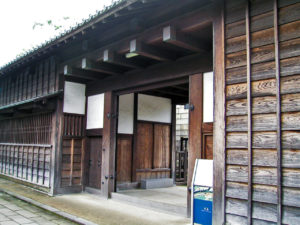 |
|
|
 |
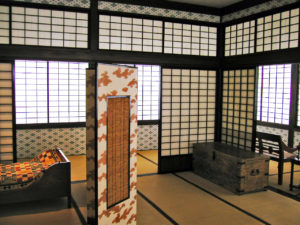 |
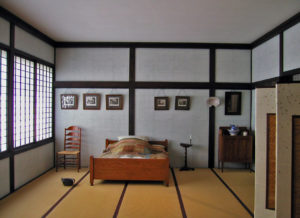 |
|
|
|
|
|
|
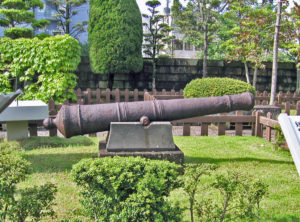 |
|
General information
| Address | 6-1 Dejima-machi, Nagasaki-city |
| Access |
a short walk from Dejima Tram station |
| Open hours | 8:00 to 21:00 |
| Admission fee | JPY 510 |
| Days closed | No closing days |
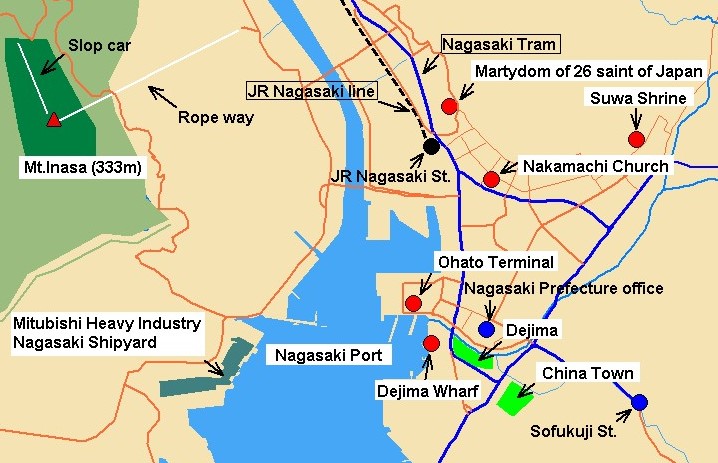
Sanno Shrine
This Tourist information is made by Japan KYUSHU Tourist for your journey.
When you have an idea or a plan for traveling in Kyushu, Japan, please contact us
by sending an Enquiry. Make an Enquiry
Sanno Shrine is located approximately 800 meters away from the ground zero of Atomic bomb.
The Shrine was instantly obliterated by the explosion and the 4000 degrees Celsius heat wave
vaporized nearby trees.
The only thing that remained is the Torii gate standing on a single column, reminding us of the
tragedy that took place.
 |
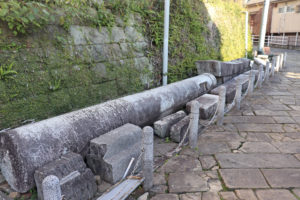 |
 |
The surviving trees of Sanno Shrine have become another living demonstration of destruction
and re-growth. Two large camphor trees were scorched, burned and stripped of all leaves by
the Atomic bomb’s shock wave; and yet, despite everything, the trees survived.
The surviving camphor trees are now a symbol of World Peace.
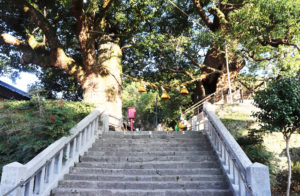 |
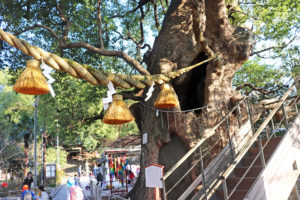 |
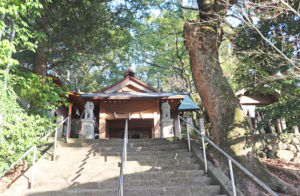 |
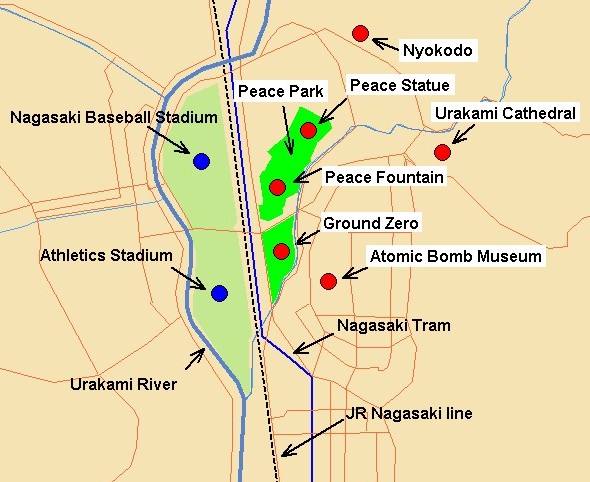
Martyrdom of the 26 Saints of Japan
This Tourist information is made by Japan KYUSHU Tourist for your journey.
When you have an idea or a plan for traveling in Kyushu, Japan, please contact us
by sending an Enquiry. Make an Enquiry
Nishizaka Hill in Nagasaki is the place of Martyrdom of 26 Japanese Saints. The 26 Martyrs of
Japan were a group of Catholics who were executed by crucifixion on February 5, 1597.
The Twenty-six Christians led by Paulo Miki, including six foreign missionaries and three young boys,
were arrested in Kyoto and Osaka on the order of Toyotomi Hideyoshi, the National ruler, for preaching
Christianity.
They were marched 800 km through the snow to Nagasaki and crucified in front of large crowd on
Nishizaka hill on Feb. 5, 1597.
Paul Miki said from the Cross
All of you who are here, please listen to me.
I am a Japanese by birth, and a brother of the Society of Jesus. I have committed no crime, and the
only reason why I am put to death is that I have been teaching the doctrine of our Lord Jesus Christ.
I am very happy to die for such cause, and see my death as great blessing from the Lord.
At this critical time, when you can rest assured that I will not try to deceive you, I want to stress
and make it unmistakably clear that man can find no way to salvation other than the Christian
way. The Christian law commands that we forgive our enemies and who have wronged us.
I must therefore say here that I forgive Taikosama (Hideyoshi).
Then they all ascended to heaven with the happy of giving the life to Christ.
|
Nishizaka hill, the site of Martyrdom in 1597 |
The martyrs said that ” All people, bless God ! ” |
The 26 Japanese martyrs have been canonized in 1862 |
Pope Pius XII designated the Nishizaka of Martyrdom of 26 Japanese
Saints as an official Pilgrimage site for Catholics in 1950.
The place of their martyrdom was designated as a Historical Place by Nagasaki-prefecture
in 1956.
The museum behind the monument is devoted to the memory of the martyrs and to Christianity in
Japan in general. Its interior is reminiscent of a church with stained-glass windows, making for
atmospheric viewing of the exhibits. On display are artifacts related to Christianity in Japan,
including old documents, statues and jewelry.
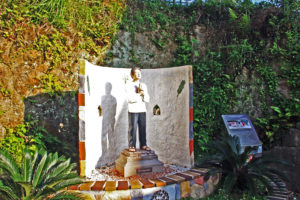 |
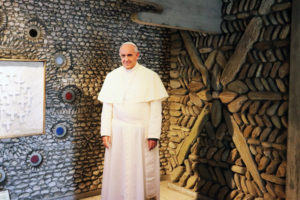 |
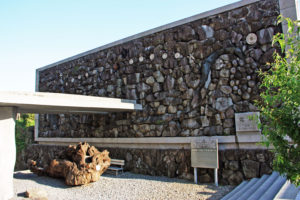 |
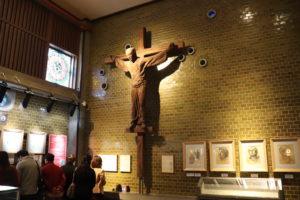 |
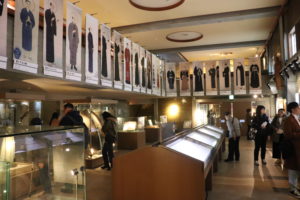 |
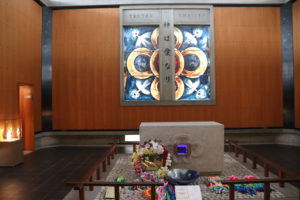 |
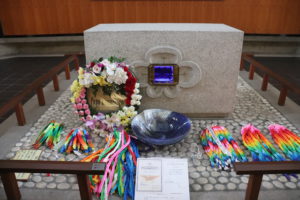 |
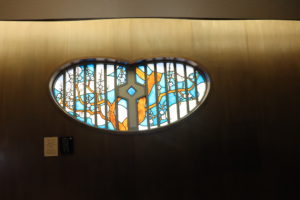 |
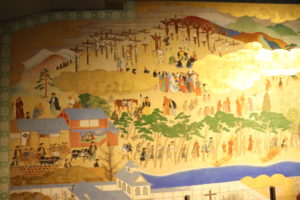 |
General information
| Address | 7-8 Nishizaka-cho, Nagasaki-city |
| Access | 5 minutes walk from JR Nagasaki Station |

Peace Fountain at Peace Park
This Tourist information is created by Japan KYUSHU Tourist for your journey.
When you have an idea or a plan for traveling in Kyushu, Japan, please contact us
by sending an Enquiry. Make an Enquiry
Peace Fountain reminds us of the tragic scene unfolded shortly after America dropped
the Atomic Bomb on Nagasaki at 11:02 am on Aug. 09, 1945. With the completion of the
Peace Fountain on Aug. 3, 1969, a monument inscribed with an epitaph was constructed.
Many people were burned deeply and died, crying and groaning for water. When people
recovered their peaceful life in 1965, a campaign for a Peace Fountain was launched.
Recorded on the monument are the name of the founder including the People’s Congress
for Prohibition of Nuclear Weapons and Promotion of Peace and the Committee for the
Construction of the Peace Fountain.
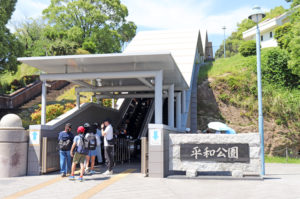 |
 |
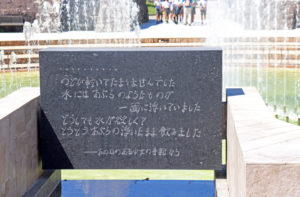 |
General information
| Address | Heiwakoen, Matsuyama-machi, Nagasaki-city |
| Access | 3 minutes walk from Heiwa-koen-shita Tram Station |

Ground Zero
This Tourist information is created by Japan KYUSHU Tourist for your journey.
When you have an idea or a plan for traveling in Kyushu, Japan, please contact us
by sending an Enquiry. Make an Enquiry
Disastrous War must not be repeated. The plutonium atomic bomb exploded about 500m over the
central monument at 11:02 a.m. on August 9, 1945. The most part of Nagasaki was destroyed, and
a tremendous number of lives were lost. And about 70,000 of Nagasaki’s 240,000 residents died
instantly, and up to 60,000 were injured.
 |
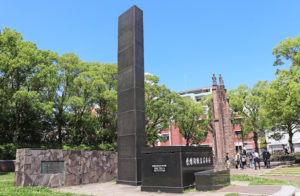 |
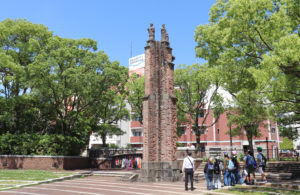 |
The radius of total destruction was about 1.6km, followed by fires across the northern portion of the
city to 3.2km south of the bomb.
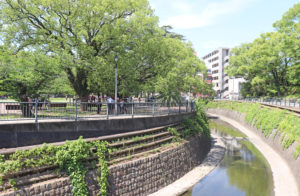 |
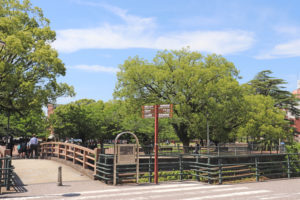 |
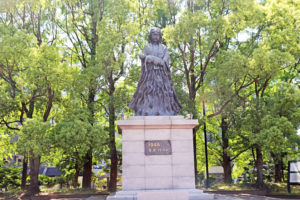 |
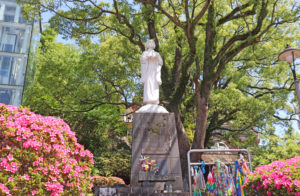 |
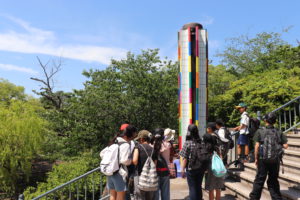 |
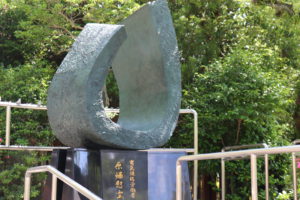 |
General information
| Address | Heiwakoen, Matsuyama-machi, Nagasaki-city |
| Access | 3 minuts walk from Heiwa-koen-shita Tram Station |

Saint Kolbe Memorial Museum, at Hongouchi Church
This Tourist information is created by Japan KYUSHU Tourist for your journey.
When you have an idea or a plan for traveling in Kyushu, Japan, please contact us
by sending an Enquiry. Make an Enquiry
Father Maximilian Kolbe was born in Poland in 1894 and was a priest of the Conventual
Order of St. Francis.
He had been active in promoting the veneration of the Immaculate Virgin Mary.
He came to Japan in 1930 and began educating seminarians and publishing a monthly
magazine ” the veneration of the Immaculate Virgin Mary.”
After that, the number of Japanese people who understood God’s teachings increased,
and Hongouchi Church was established in 1931.
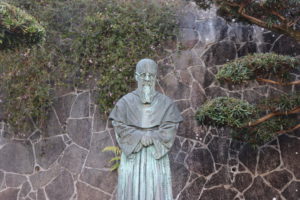 |
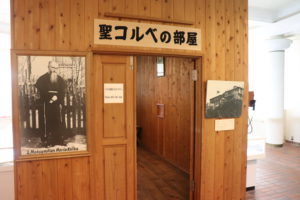 |
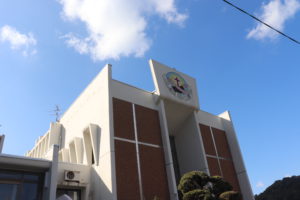 |
After six years in Japan, he returned to Poland for health reasons.
And then, he volunteered to die in place of a man named Franciszek Gajowniczek in the
German death camp of Auschwitz, located in German-occupied Poland.
Saint Kolbe Memorial Museum was built to commemorate his canonization in 1986.
Oura Cathedral
This Tourist information is created by Japan KYUSHU Tourist for your journey.
When you have an idea or a plan for traveling in Kyushu, Japan, please contact us
by sending an Enquiry. Make an Enquiry
The Cathedral is one of the significant Christian Pilgrimage site in Japan. Established 1865,
this church is officially known as “Oura Cathedral, the Church of 26 Martyrs.” It was built by
the French priest Bernard Petitjean of Fier who had been dispatched by the Foreign
Missionary Church of Paris to dedicate prayers to the 26 saints martyred on Nishizaka hill.
For this reason, the church faces Nishizaka hill. It was designated as a National Treasure in
1933 for its value as Japan’s oldest Gothic-style Cathedral.
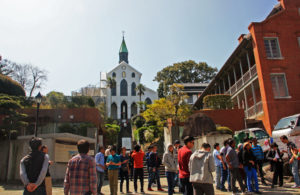 |
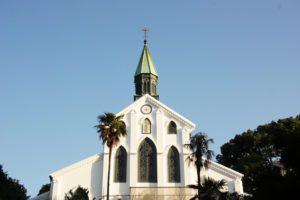 |
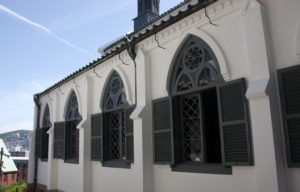 |
“On March 17, 1865, a group of peasants from Urakami came to the church and professed
their faith to Father Petitjean, thus revealing that Christianity had survived through the
centuries of persecution. The white marble statue of the Holy Mother at the entrance was built
in commemoration of the dramatic discovery of the “Hidden Christians.
|
|
|
|
General information
| Address | 5-3 Minamiyamate, Nagasaki-city |
| Access |
10 minutes walk from Oura tensyudo-mae tram station |
| Open hours | 8:00 to 17:45 |
| Admission fee | JPY 1,000 |
| Days closed | No closing days |
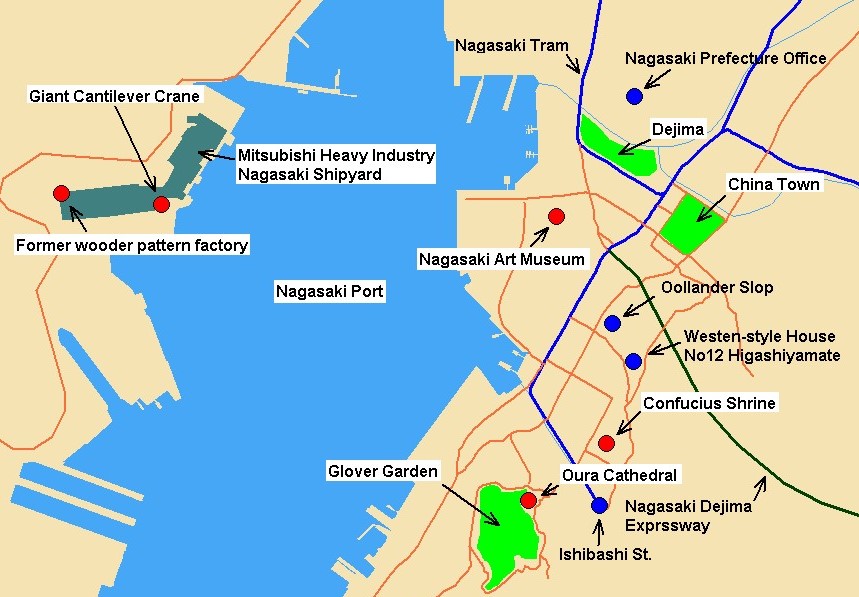
Kurosaki Church
This Tourist information is created by Japan KYUSHU Tourist for your journey.
When you have an idea or a plan for traveling in Kyushu, Japan, please contact us
by sending an Enquiry. Make an Enquiry
The Church is located in Kurosaki district, where was place of the setting for Endo Shusaku’s
novel Silence. In 1897, the foundations were laid down according to Father de Rotz’s design.
Construction followed and in 1920 the church was completed.
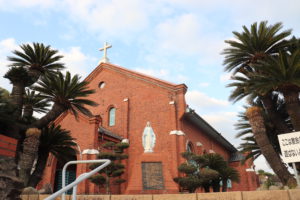 |
 |
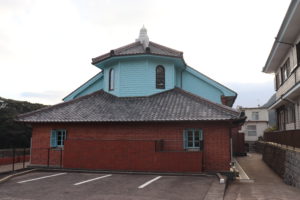 |
The followers built it brick by brick with their own hands. The modest design serves to bring out the
beauty of the bricks. Experience the depth when you come inside and see the rib vault ceiling.
The church’s stained glass also leaves a lasting impression.
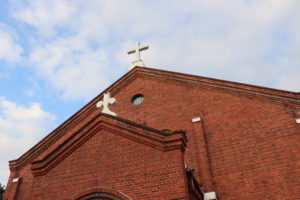 |
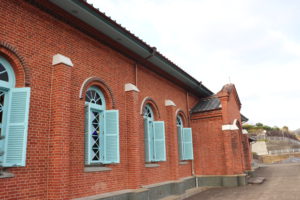 |
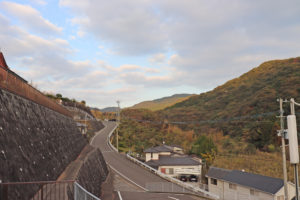 |
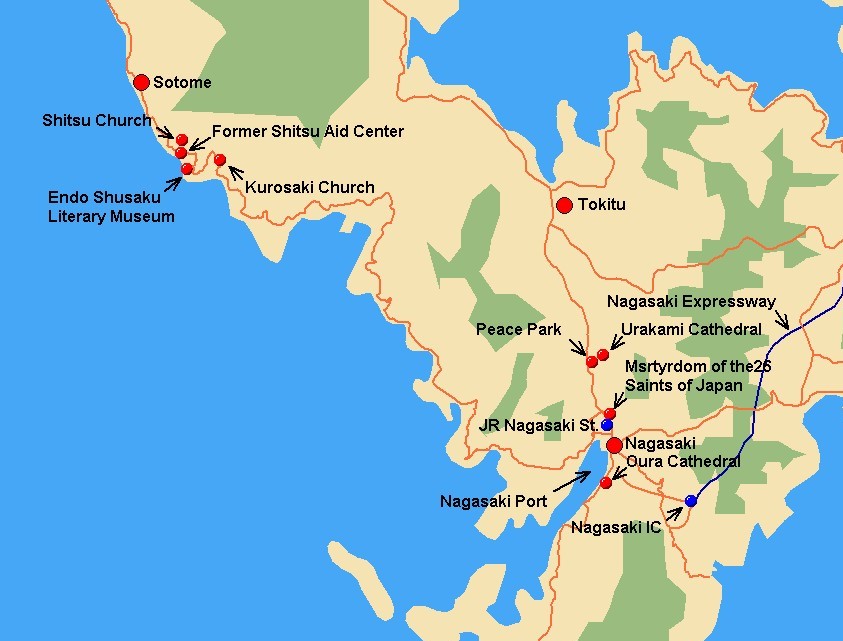
Sotome Pilgrimage sites
This Tourist information is created by Japan KYUSHU Tourist for your journey.
When you have an idea or a plan for traveling in Kyushu, Japan, please contact us
by sending an Enquiry. Make an Enquiry
Sotome is located between Nagasaki-city and Saikai-city, and face to East China Sea.
During the ban on Christianity from 17 century to end of the 19 century, Sotome was
home to communities of “Hidden Christians”, many of whom emigrated there from
other parts of Nagasaki as the remote region allowed them to practice their religion
in secret.
French missionary Father Marc Marie de Rotz played a large role in reestablishing the
religion in the area. He established Shitsu Church on a hill overlooking the sea.
On an elevation commanding a view over the Sea of Goto, Father Marc Marie de Rotz
established a church at his own expense 1882. The building was extended and renovated
again and again. A statue of Mary that he ordered from France is standing in the bell tower.
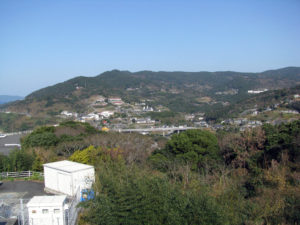 |
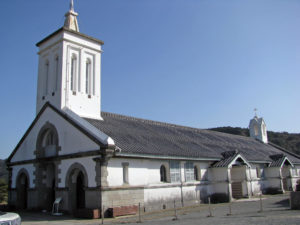 |
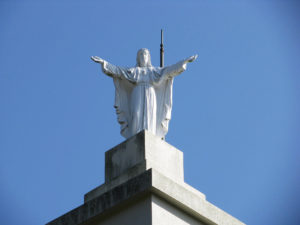 |
I want to save people in the Sotome from poor life. Former Shitsu Aid Centeris indispensable in
talking about the history and culture of the region.
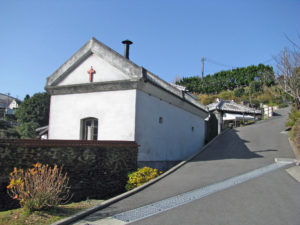 |
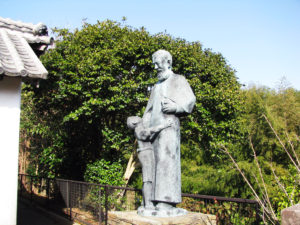 |
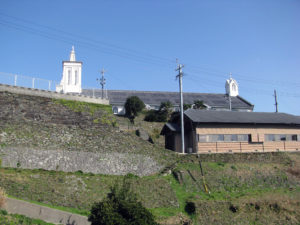 |
The setting of Endo Shusaku’s novel Silence. Sotome is blessed with a unique history and
culture of Christianity. In particular, the area in which the Endo Shusaku Literary Museum
stands is known as the site of a Christian village, one of Endo’s most notable work, Silence.
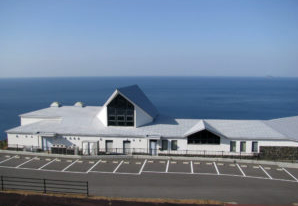 |
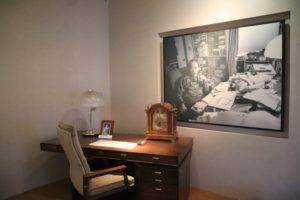 |
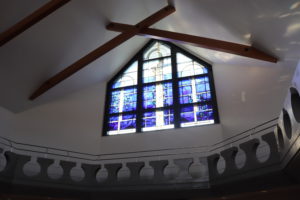 |
The Church is located in Kurosaki district, where was place of the setting for Endo Shusaku’s
novel Silence. In 1897, the foundations were laid down according to Father de Rotz’s design.
Construction followed and in 1920 the church was completed. The followers built it brick by
brick with their own hands. The modest design serves to bring out the beauty of the bricks.
 |
 |
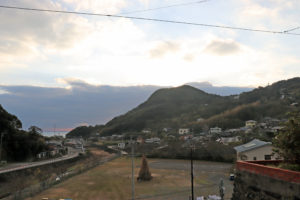 |
|
|
|
|
General information
| Address | Shitsu, Nagasaki-city |
| Access | 50 minutes by a vehicle from JR Nagasaki Station |

Atomic Bomb Museum
This Tourist information is created by Japan KYUSHU Tourist for your journey.
When you have an idea or a plan for traveling in Kyushu, Japan, please contact us
by sending an Enquiry. Make an Enquiry
Atomic Bomb Museum opened in Nagasaki Peace Park in 1996 as part of the 50th anniversary
project for the Nagasaki atomic bombing.
The museum replaced Nagasaki International Cultural Hall, where a number of artifacts related to
the atomic bombing were exhibited.
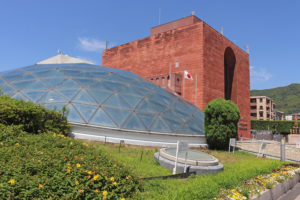 |
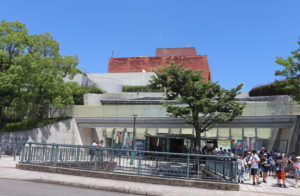 |
 |
The museum exhibits a number of photograph that depict the devastation
caused by atomic bomb showing the lead-up to this tragic day, the history of the development of
nuclear arms and our desire for peace.
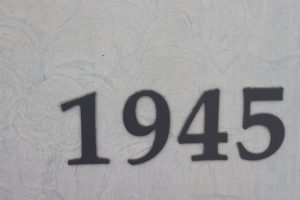 |
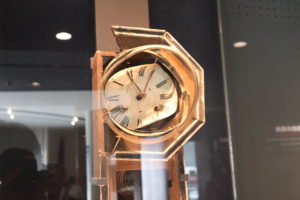 |
 |
|
|
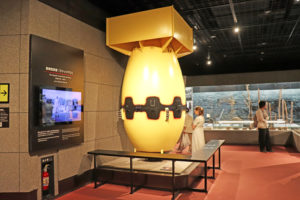 |
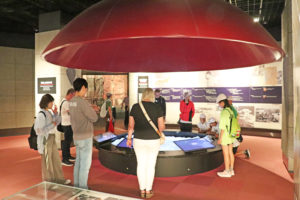 |
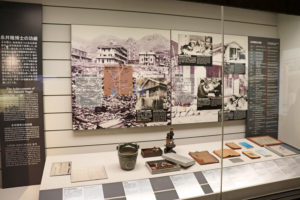 |
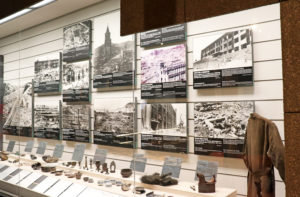 |
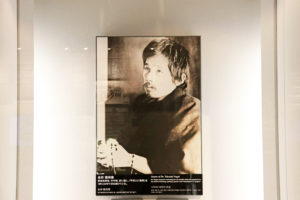 |
General information
| Address | 7-8 Hirano-machi, Nagasaki-city |
| Access |
5 minutes walk from Genbaku-shiryokan Tram Station |
| Open hours |
8:30 to 17:30 September to December 8:30 to 18:30 May to August 8:30 to 20:00 August 7 to 9 |
| Admission fee | JPY 200 |
| Days closed | December 29 to 31 |


